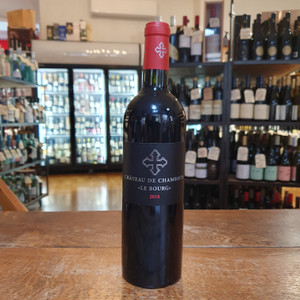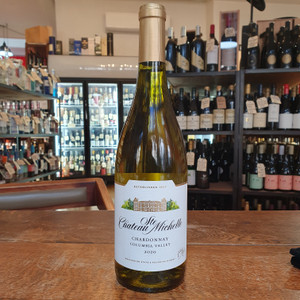
Chateau Vieux Chevrol
Lying just to the north of Pomerol and separated by the narrow Barbanne stream, the Lalande-de-Pomerol appellation comprises a thousand hectares of vines in the villages of Lalande-de-Pomerol and Neac.
These vineyards date from the 11th century when the Knights of St. John of Jerusalem, the Knights of Malta, established a residence for the pilgrims en route to and from Santiago de Compostella and introduced the cultivation of grapes to the area. Prior to 1925 the wines were all labeled as Pomerol, but decrees were passed at that time separating the vineyards of Pomerol from those of Lalande-de-Pomerol and Neac. In 1954 the vineyards of Neac were incorporated into the Lalande-de-Pomerol appellation.
Situated in the “lieu-dit” Chevrol, the Chateau Vieux Chevrol vineyard lies on the Neac plateau overlooking the vineyards of Pomerol, a terroir long considered the most privileged of the appellation. The Champseix family has made wine at Vieux Chevrol for many generations and continues to do so in a traditional manner -which would now be called “natural.” We have worked with two generations: first with Jean-Pierre, whose veneration for and understanding of his land are both inspired and inspiring and since 2016 with his son Michel, who immediately set out to get the vineyard certified organic. I remember visiting the estate in April of 2016 when Michel was experimenting with an array of cover crops that had grown very tall and completely overtaken the vines. I turned to Jean-Pierre, saying that he must be very proud of his son, to which he responded with his usual understatement and impeccable timing “yes, but perhaps this time Michel has gone too far.”
The vineyard is planted with 80%Merlot, 10% Cabernet Franc and 10% Cabernet Sauvignon. The vines have an average age of 30 years. The soil is clay mixed with gravel and iron-rich sandstone known locally as “crasse de fer.” Jean-Pierre says that the acidic clay of his area naturally gives light and fragrant wines. In accord with this terroir, plowing is done four times a year to maintain the balance in the soils and harvesting is done by hand as late as possible to insure full maturity of the grapes. The harvested grapes are not crushed and are fed by gravity into stainless-steel fermenting vats in order to retain maximum freshness. The wine is aged for 12 months in 600 liter casks during which time it is never touched except for a monthly topping up of the casks. The wine is then aged in tank for another 6 months to allow for a natural clarification. It is fined with egg whites and bottled unfiltered.






